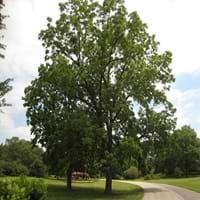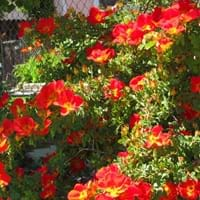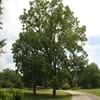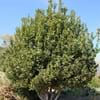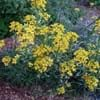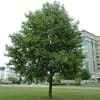Life Span
Perennial
Perennial
Type
Tree
Flowering Plants, Ornamental Plants, Shrubs
Origin
United States, Northeastern United States, Mid-Atlantic United States, Southeastern United States, North-Central United States, Central United States, South-Central United States, Texas, Canada
Not Available
Types
Not Available
Not Available
Habitat
bottomlands, Moist woods
Foot Hills
USDA Hardiness Zone
4-9
Not Available
AHS Heat Zone
9-3
Not Available
Sunset Zone
1a, 1b, 2a, 2b, 3a, 3b, 4, 5, 6, 7, 8, 9, 14, 15, 16, 17, 18, 19, 20, 21
Not Available
Habit
Oval or Rounded
Clump-Forming
Flower Color
Yellow green
Orange Red, Yellow
Flower Color Modifier
Bicolor
Bicolor
Fruit Color
Green, Chocolate
Non Fruiting Plant
Leaf Color in Spring
Green
Green
Leaf Color in Summer
Green, Dark Green
Green, Dark Green
Leaf Color in Fall
Yellow, Dark Green, Yellow green, Gold
Dark Green
Leaf Color in Winter
Not Available
Dark Green
Leaf Shape
Pinnate
Pinnate
Plant Season
Spring, Summer, Fall
Spring, Summer, Fall
Sunlight
Full Sun
Full Sun, Partial Sun
Growth Rate
Medium
Medium
Type of Soil
Clay, Loam, Sand
Loam, Sand
The pH of Soil
Acidic, Neutral
Acidic, Neutral
Soil Drainage
Well drained
Well drained
Bloom Time
Late Spring, Early Summer
Spring, Late Spring, Early Summer, Summer, Late Summer, Early Fall, Fall
Repeat Bloomer
No
Not Available
Tolerances
Not Available
Drought
Where to Plant?
Ground
Container, Ground, Pot
How to Plant?
Seedlings
Cuttings
Plant Maintenance
Medium
Medium
Watering Requirements
Average Water Needs, Requires regular watering
Average Water Needs
In Summer
Lots of watering
Lots of watering
In Spring
Moderate
Moderate
In Winter
Average Water
Average Water
Soil pH
Acidic, Neutral
Acidic, Neutral
Soil Type
Clay, Loam, Sand
Loam, Sand
Soil Drainage Capacity
Well drained
Well drained
Sun Exposure
Full Sun
Full Sun, Partial Sun
Pruning
Prune in early spring, Prune when plant is dormant, Remove branches, Remove damaged leaves, Remove dead branches, Remove dead leaves, Remove dead or diseased plant parts
Remove damaged leaves, Remove dead branches, Remove dead leaves
Fertilizers
Apply NPK fertilizer at the ratio of 6-24-24
All-Purpose Liquid Fertilizer
Pests and Diseases
Red blotch
Beetles, Black Spot, Caterpillars, Downy mildew, Mosaic viruses, Powdery mildew, Rust, Scale insects, Thripes
Plant Tolerance
Not Available
Drought
Flowers
Insignificant
Showy
Flower Petal Number
Not Available
Double
Edible Fruit
Yes
Not Available
Fragrant Bark/Stem
Yes
No
Foliage Texture
Coarse
Medium
Foliage Sheen
Glossy
Glossy
Invasive
No
Not Available
Self-Sowing
Yes
Not Available
Attracts
Birds, Butterflies
Birds, Butterflies
Allergy
Anaphylaxis, Toxic
Rash
Aesthetic Uses
Not Used For Aesthetic Purpose
Showy Purposes
Beauty Benefits
Good for skin
Not Available
Environmental Uses
Air purification, Shadow Tree
Air purification
Medicinal Uses
Cancer, Coronary diseases, Cures constipation, Diarrhea, Diphtheria, High cholestrol, Immunity, Intestinal worms, Leukemia, Skin wounds, Sore throat, Syphilis, Use as a gargle
Not Available
Part of Plant Used
Fruits
Flowers
Other Uses
Used As Food, Used as Ornamental plant
Oil is used in perfume, soaps, creams, etc.
Used As Indoor Plant
No
Yes
Used As Outdoor Plant
Yes
Yes
Garden Design
Feature Plant, Shade Trees
Container, Cutflower, Feature Plant, Foundation, Mixed Border, Topiary / Bonsai / Espalier
Botanical Name
JUGLANS nigra
Rosa foetida
Common Name
Black Walnut
Austrian briar, Persian yellow rose, Austrian copper rose
In Hindi
काले अखरोट के पेड़
Austrian copper rose
In German
Schwarz Walnussbaum
Die Gelbe Rose, Fuchs-Rose, Wachs-Rose, Persische Gold-Rose, Austrian Briar
In French
Noir noyer
Le rosier fétide
In Spanish
nogal negro
Rosa foetida
In Greek
Μαύρη καρυδιά
Austrian copper rose
In Portuguese
nogueira preta
Rosa fétida
In Polish
Czarny orzech drzewo
Róża żółta
In Latin
Niger walnut tree
Austrian copper rose
Phylum
Magnoliophyta
Magnoliophyta
Class
Magnoliopsida
Magnoliopsida
Order
Juglandales
Rosales
Family
Juglandaceae
Rosaceae
Clade
Angiosperms, Eudicots, Rosids
Not Available
Tribe
Juglandeae
Not Available
Subfamily
Juglandinae
Not Available
Number of Species
Not Available
Season and Care of Black Walnut and Austrian Copper Rose
Season and care of Black Walnut and Austrian Copper Rose is important to know. While considering everything about Black Walnut and Austrian Copper Rose Care, growing season is an essential factor. Black Walnut season is Spring, Summer and Fall and Austrian Copper Rose season is Spring, Summer and Fall. The type of soil for Black Walnut is Clay, Loam, Sand and for Austrian Copper Rose is Loam, Sand while the PH of soil for Black Walnut is Acidic, Neutral and for Austrian Copper Rose is Acidic, Neutral.
Black Walnut and Austrian Copper Rose Physical Information
Black Walnut and Austrian Copper Rose physical information is very important for comparison. Black Walnut height is 1,830.00 cm and width 1,830.00 cm whereas Austrian Copper Rose height is 150.00 cm and width 170.00 cm. The color specification of Black Walnut and Austrian Copper Rose are as follows:
Black Walnut flower color: Yellow green
Black Walnut leaf color: Green
Austrian Copper Rose flower color: Orange Red and Yellow
- Austrian Copper Rose leaf color: Green
Care of Black Walnut and Austrian Copper Rose
Care of Black Walnut and Austrian Copper Rose include pruning, fertilizers, watering etc. Black Walnut pruning is done Prune in early spring, Prune when plant is dormant, Remove branches, Remove damaged leaves, Remove dead branches, Remove dead leaves and Remove dead or diseased plant parts and Austrian Copper Rose pruning is done Remove damaged leaves, Remove dead branches and Remove dead leaves. In summer Black Walnut needs Lots of watering and in winter, it needs Average Water. Whereas, in summer Austrian Copper Rose needs Lots of watering and in winter, it needs Average Water.
